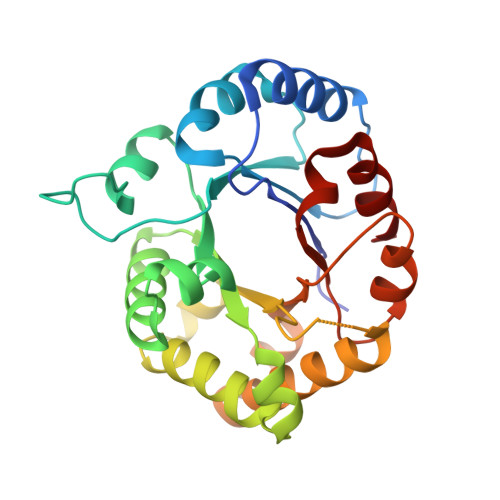Identification of amino acids that account for long-range interactions in two triosephosphate isomerases from pathogenic trypanosomes.
Garcia-Torres, I., Cabrera, N., Torres-Larios, A., Rodriguez-Bolanos, M., Diaz-Mazariegos, S., Gomez-Puyou, A., Perez-Montfort, R.(2011) PLoS One 6: e18791-e18791
- PubMed: 21533154
- DOI: https://doi.org/10.1371/journal.pone.0018791
- Primary Citation of Related Structures:
3Q37 - PubMed Abstract:
For a better comprehension of the structure-function relationship in proteins it is necessary to identify the amino acids that are relevant for measurable protein functions. Because of the numerous contacts that amino acids establish within proteins and the cooperative nature of their interactions, it is difficult to achieve this goal. Thus, the study of protein-ligand interactions is usually focused on local environmental structural differences. Here, using a pair of triosephosphate isomerase enzymes with extremely high homology from two different organisms, we demonstrate that the control of a seventy-fold difference in reactivity of the interface cysteine is located in several amino acids from two structurally unrelated regions that do not contact the cysteine sensitive to the sulfhydryl reagent methylmethane sulfonate, nor the residues in its immediate vicinity. The change in reactivity is due to an increase in the apparent pKa of the interface cysteine produced by the mutated residues. Our work, which involved grafting systematically portions of one protein into the other protein, revealed unsuspected and multisite long-range interactions that modulate the properties of the interface cysteines and has general implications for future studies on protein structure-function relationships.
Organizational Affiliation:
Departamento de Bioquímica y Biología Estructural, Instituto de Fisiología Celular, Universidad Nacional Autónoma de México, Circuito Exterior S/N, Ciudad Universitaria, México DF, Mexico.














